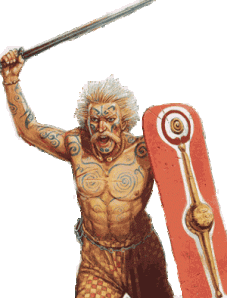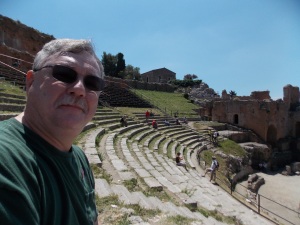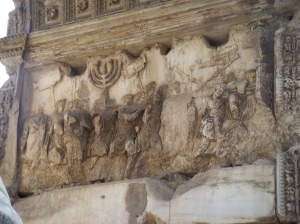 In 77 AD, Gnaeus Julius Agricola arrived in what is now Wales during the summer as governor and commander of the Roman forces in the British Isles. It was not his first time, there, having served under Gaius Suetonius Paulinus in 58 through 62 AD. He has served on the staff on Suetonius during the rebellion under Boudica. We know a great deal about him due to the biography of him written by his son-in-law, Tacitus.
In 77 AD, Gnaeus Julius Agricola arrived in what is now Wales during the summer as governor and commander of the Roman forces in the British Isles. It was not his first time, there, having served under Gaius Suetonius Paulinus in 58 through 62 AD. He has served on the staff on Suetonius during the rebellion under Boudica. We know a great deal about him due to the biography of him written by his son-in-law, Tacitus.
Agricola was from a family with roots in Gaul and thus was a Celt. He served as a Tribune and then later as Praetor. It was fortunate that his posting was outside of Rome for he was in Spain when Nero committed suicide. The death of Nero led to the turmoil known as the Year of Four Emperors. The Governor of Spain, who had ordered Agricola to make an accounting of the treasures of the Temple, was Galba. Galba succeeded Nero as Emperor, but was then murdered by Otho. Agricola supported Vespasian after Otho (who had murdered Agricola’s mother, with whom Agricola had been quite close).
After his appointment as Governor of Britain by Vespasian, Agricola advanced his troops into southwestern Scotland, or Caledonia, as the Romans then called it. He apparently advanced to the what is now known as the River Tay.
The Caledonians opposed this movement, according to Tacitus, under a leader known as Calgacus. Little to nothing is known about Calgacus; he is not recorded on any of the Scottish or Irish lists of Pictish kings. Tacitus calls him: ‘outstanding in bravery and of noble birth’. The name Calgacus, which is the Latin form of a very old Celtic word ‘Calgach’, probably meaning ‘The Swordsman’, and derived from ‘Calg’, signifying anything sharp, like a spear or sword. The modern Gaelic adjective ‘Calgach’ can mean either passionate or piercing.
He assembled an army of 30,000 warriors against the Romans at the Battle of Mons Graupius in 83 A.D. Tacitus records a speech of Calgacus about the Romans, which some scholars believe has a ring of truth to it, unlike most speeches reported in antiquity:
“Robbers of the world, having by their universal plunder exhausted the land, they rifle the deep. If the enemy be rich, they are rapacious; if he be poor, they lust for dominion; neither the east nor the west has been able to satisfy them. Alone among men they covet with equal eagerness poverty and riches. To robbery, slaughter, plunder, they give the lying name of empire; they make a desert and call it peace.”
In particular the last line, which in Latin is ubi solitudinem faciunt, pacem appellant, is particularly poignant.
The Battle of Mons Graupius, from whence possibly the name of the Garmpian Mountains comes, was according to Tacitus, a one-sided affair. Agricola brought his men up in close order to prevent the Picts from using their swords, which were designed for slashing, in the way intended. The Picts, according to Tacitus, lost 10,000 men and the Romans only 360. The Picts army melted away into the Highlands mist, as did Calgacus, who never graces the pages of history again.
I make this same introduction into the history of Scotland as a prelude to me next book, Caledonia: A Song of Scotland, which will be published within days.
I present to you what will be on the flap of the hardcover version of Caledonia: A Song of Scotland:
By the author of the critically acclaimed novel, Casting Lots, William D. McEachern, Caledonia: A Song of Scotland is his second historical novel. Caledonia is the epic tale of Scotland’s struggle to become an independent nation. In the process, the story of Scotland is revealed in its people, the Picts, the Irish Missionaries, the Norsemen, and the Highland Clans. All the natural beauty and wonder that is Scotland are captured for the reader’s enjoyment, from the wind-swept Isle of Skye through the Highlands with its towering bens, riven with numerous waterfalls, across the moors, purple with heather, and dotted with sheep and the lowing, ruddy Highland cattle, to the reflecting waters of the lochs, some mysterious and mist-laden, like Loch Ness, or picturesque, like Loch Lomond. Told from the viewpoint of one clan-the MacDonalds of Clanranald-the reader is swept along through the major events in the history of Scotland, from the writing of the Declaration of Arbroath in 1320, the Massacre at Glencoe by the Campbells, the MacDonalds greatest enemy, through the Rising of 1745 under Bonnie Prince Charles’ to the decisive defeat at the Battle of Culloden and the bloody Highland Clearances under William, the Duke of Cumberland. Caledonia acquaints the reader with why so deeply ingrained in Scotland’s national psyche is its fight for freedom, both political and religious. Caledonia is the first novel in the series which will tell the story of the Scots not only in Scotland, but also in America.

